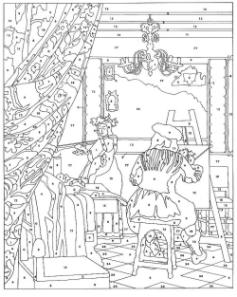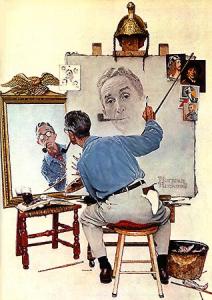
 The church has been given a resource of wisdom with the two descriptions of church leaders in Titus 1 and 1 Timothy 3. While these are by no means the only Scriptures important to understanding church leadership, they do stand out. It is as if we move from a general description of leadership to a portrait. This is no color-by-number pattern, Paul paints with a full blended pallet with tints and shades to describe to his student ministers what sort of leadership growing, healthy congregations need. His art also tells a story as he explains why each bright virtue matters not only for one generation, but those to come.
The church has been given a resource of wisdom with the two descriptions of church leaders in Titus 1 and 1 Timothy 3. While these are by no means the only Scriptures important to understanding church leadership, they do stand out. It is as if we move from a general description of leadership to a portrait. This is no color-by-number pattern, Paul paints with a full blended pallet with tints and shades to describe to his student ministers what sort of leadership growing, healthy congregations need. His art also tells a story as he explains why each bright virtue matters not only for one generation, but those to come.
Unfortunately, we have abused these portraits. We have not appreciated them as they deserve. We have turned the wisdom from an apostle into a legalistic list. We have kept good men who match the portrait from serving because of arguments over the strictest interpretations. The result often being that good men who match the portrait step aside peacefully to avoid causing trouble. We have not paid attention to the artists other works (2 Corinthians 3:6), he teaches us to take in the Spirit of the word which is living, active and transforming. Rather we have focused on the letter of the law which kills. We have processed these portraits into a sort of case law that we use to veto the appointment of elders. We have used them as the means to filibuster instead of addressing what is sometimes the real issue: conflict and reconciliation. Instead of taking in the rich color and connected texture of the portraits, we have flattened and dulled them into a set of disconnected issues. Doing so allows us to attach our own agendas and anxieties to the Scripture in order to nervously control power and authority.
Mission Illustration
Would we do that? Unfortunately we have. I am not saying that any of us necessarily want to, but we all know how it has been done and perhaps weve done nothing about it. I have heard that some men who were obvious leaders were kept from serving (or kept themselves from serving) because they only had one child. Why is that an issue? Because the Scripture says children which is plural. That sort of reading ignores the intent and meaning in favor of a grammar. Likewise, we have avoided understanding what is meant by the phrase one woman man. I will admit that it isnt easy, but too often we have made it far too simple and we have ignored the variety of circumstances (death, divorce, polygamy, infidelity) that this text could be referring to. But the real question is, Why does it matter that he is a one-woman man in the first place? Our problem isnt that we have wrestled with this text, we havent wrestled enough with it. Scripture is never static or stale. It is always challenging us to grow even as our culture changes around us.
So what are the better ways to appreciate these portraits? How shall we read these texts? Why were they written in the first place and what do they mean? The portrait is a portrait of three things ...
The Portraits are Mirrors We are all held to this standard

When we look at the portraits, do we see how they become a mirror, or a mold? We are all being called to fit this description. We are not exempt from being blameless or living right within our family. We are not exempt from being hospitable or setting an example. We are not exempt from being morally upright and peaceable.
These portraits were not just painted for leaders. They were painted for all of us to show us how to live. Do not distance yourself from these virtues. Dont stop at looking for them in others, but seek to find them in yourself. Pray for Gods Spirit to work in you to make you righteous.
 Link to next sermon
Link to next sermon
 Link to other sermons of Chris Benjamin
Link to other sermons of Chris Benjamin